The Gran Sasso mountain, bear L’Aquila and some 120 km east of Rome is a rewarding location, especially for the photographer who wishes to capture the drama of the landscape. This article covers such an excursion and presents a set of pictures which, I hope, give some flavour of this wonderful location.
The title is a verse from an unfinished and untitled poem by Ludovico Ariosto, intended as a following to the Orlando Furioso, and composed between 1516 and 1521. Ariosto describes “a mountain that almost borders with the sky / and so much raises its summit above neighbouring mountains / that no other comes close to its height”, somewhere North of India.
He had never been there but had gained an approximate knowledge of the region from travel narratives, first and foremost that of Marco Polo who visited the Pamir at the end of the thirteenth century. I have always thought that Ariosto’s description is quite fitting for the Corno Grande (Big Horn) of Gran Sasso, which, although only 2,914 m above sea level, is much higher than any other mountain in the Appennines and is unrivalled by neighbouring summits.
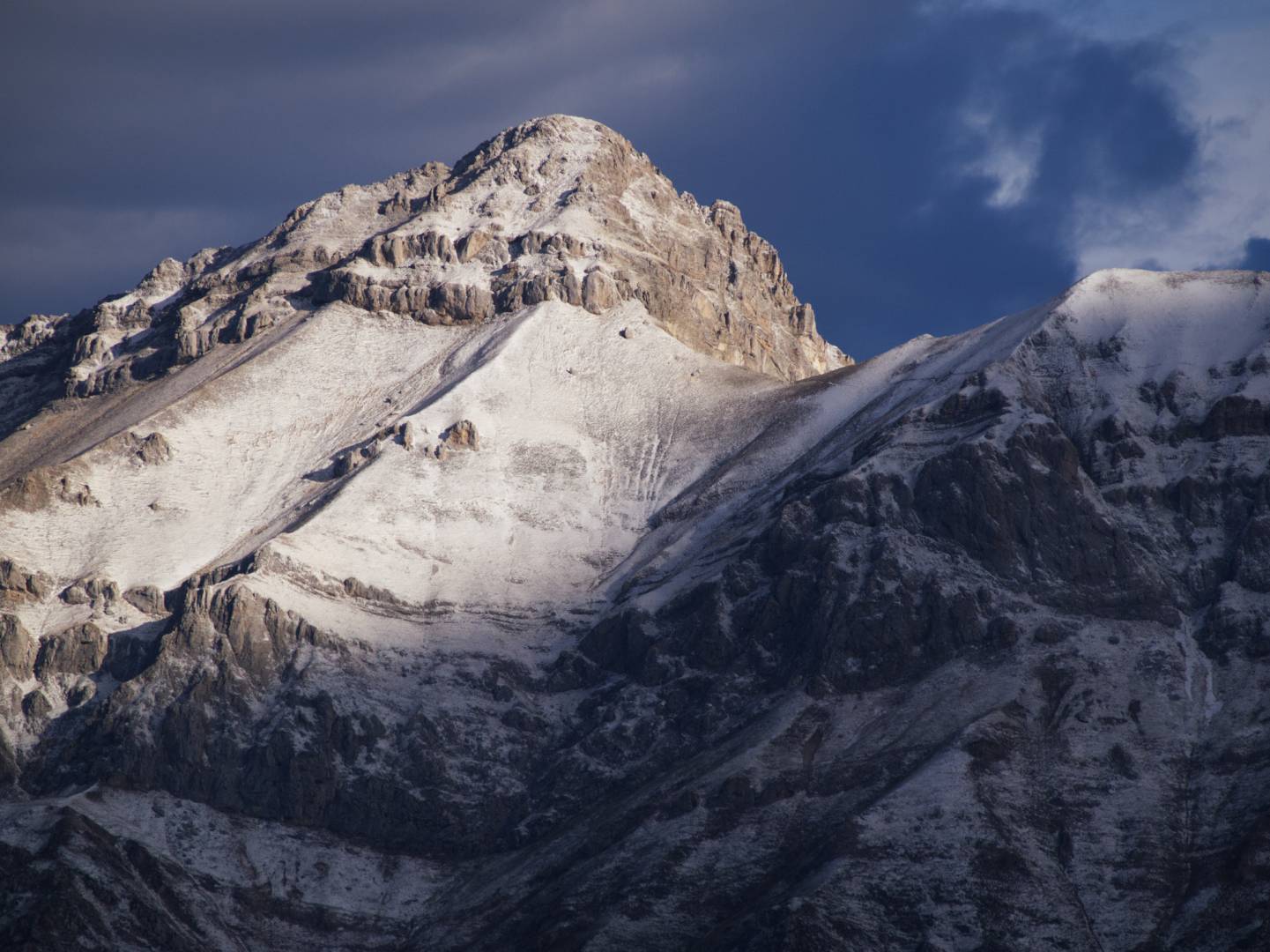
Impressive views
One clear but quite early and cold morning in the late autumn of 2017 a couple of friends and I headed out to the summit of Pizzo Cefalone (2533m), a minor elevation of the Gran Sasso (2914 m). The path starts in Campo Imperatore (2135 m), which one reaches by car or by cableway; we went by car to avoid being bound to the timetable of the cableway. The road from L’Aquila to Campo Imperatore commands some impressive views of the peaks of the Grans Sasso, the SE side of the Corno Grande being the most majestic).
From Campo Imperatore, one takes a gentle path leading to a pass called the Portella (little door; 2260 m), once used to connect the cities of Teramo and L’Aquila. From this point on one walks on the ridge of Pizzo Cefalone and has a continuous view of the main peaks of the group. The monte Corno (mount Horn) with the two summits of the big and little Horns offers you its very scenic west ridge.
Francesco De Marchi
The first recorded ascent of the Corno Grande is attributed to Francesco De Marchi on 19 August 1573; he described his accomplishment in a book titled “In cima al Corno Monte” (On the summit of Mount Horn). It is unclear which side he climbed, but since he started from Campo Imperatore, it is reasonable to assume that he must have climbed the south or south-east side as seen in the above picture.
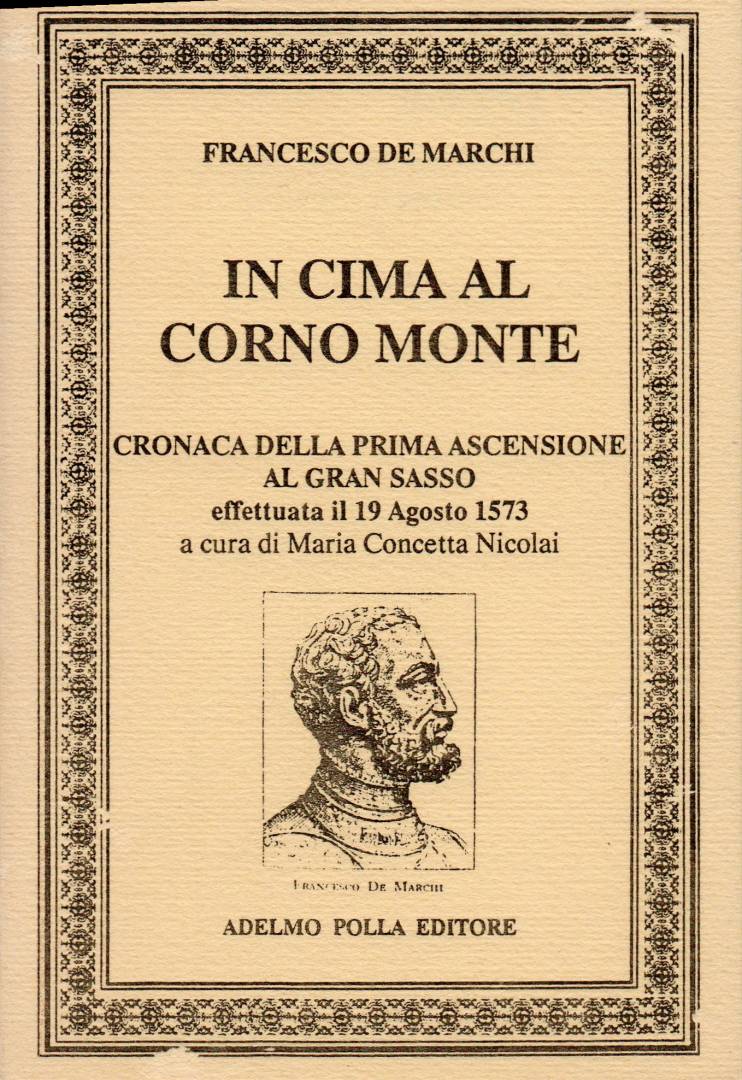
Francesco De Marchi (Bologna 1504 – L’Aquila 1576) was an officer in the army of Alessandro de’ Medici and his wife, Margherita d’Austria. The region of Abruzzi was at the time in the domain of the couple, and De Marchi made some explorations of the Gran Sasso and several attempts to climb its summit over thirty years.
The successful attempt was also his last one when he was aged 69, three years before his death. With him were two friends and three guides from the village of Assergi, at the foot of the mountain.
One of the guides, Francesco di Domenico by name, was a deer hunter and claimed to have already reached the summit; and indeed he proved crucial to the success because after a couple of wrong turns he found a way to the summit.
Of the summit, Francesco writes that he had “the impression of being in suspended in mid-air because all the tallest mountains encircling monte Corno are much lower”. Undoubtedly reaching the summit of monte Corno was quite an accomplishment for the time: the great alpine conquests were to begin only some two centuries later, and the little Horn of the Gran Sasso, lower (2633 m) but steeper, was conquered only in 1887, by Abbate and Acitelli, two accomplished climbers.
Fact and fiction
De Marchi’s account has been reprinted by a local publisher and makes for entertaining reading, provided you understand Italian. The reader may be impressed by several similitudes between the real description by De Marchi and the fictitious one by Ariosto. While it is not impossible that the former knew the latter and was inspired by it, these descriptions include a mixture of awe and horror quite typical of the time, and you can find similar ones also in Dante’s comedy written two centuries earlier, and in other narratives.
Once we had reached the modest summit of Pizzo Cefalone, we had in front of us two beautiful valleys pointing northwards: the Venacquaro valley between Monte Corvo (Mount Raven) and Pizzo Intermesoli, and the Maone valley between Pizzo Intermesoli and Monte Corno.
On our way back we followed a slightly different route, as we kept on the ridge East of the Portella pass, to shoot the south-east side of the Intermesoli, with its pillars and, further east, the group of mounts Prena and Camicia. The back route we followed is slightly longer, but besides the additional views it offers, it passes close to the Duca degli Abruzzi refuge where we enjoyed a warm lunch.
Chronology
I shot this series with an Olympus EPM1 and its kit lens (14-42 mm). Undoubtedly, as in the majority of my pictures, the landscape makes the image, and my contribution is to walk (or sometimes to climb) to the appropriate place and to press the button; we were lucky because the light was excellent and the first snow of the season had just fallen.
You can see the sky and light changing as we slowly made our way from Campo Imperatore to the Pizzo Cefalone and then back over some six or seven hours (the order of the pictures is also chronological). Given that the Cefalone is among the southernmost summits of the group, and the shots I present point from north-west to north-east, I had perfect light for most of the time. My Oly is an outdated mirrorless camera and is plagued by an unpredictable shutter shock with some lenses; however, I love it because it is so light and small.

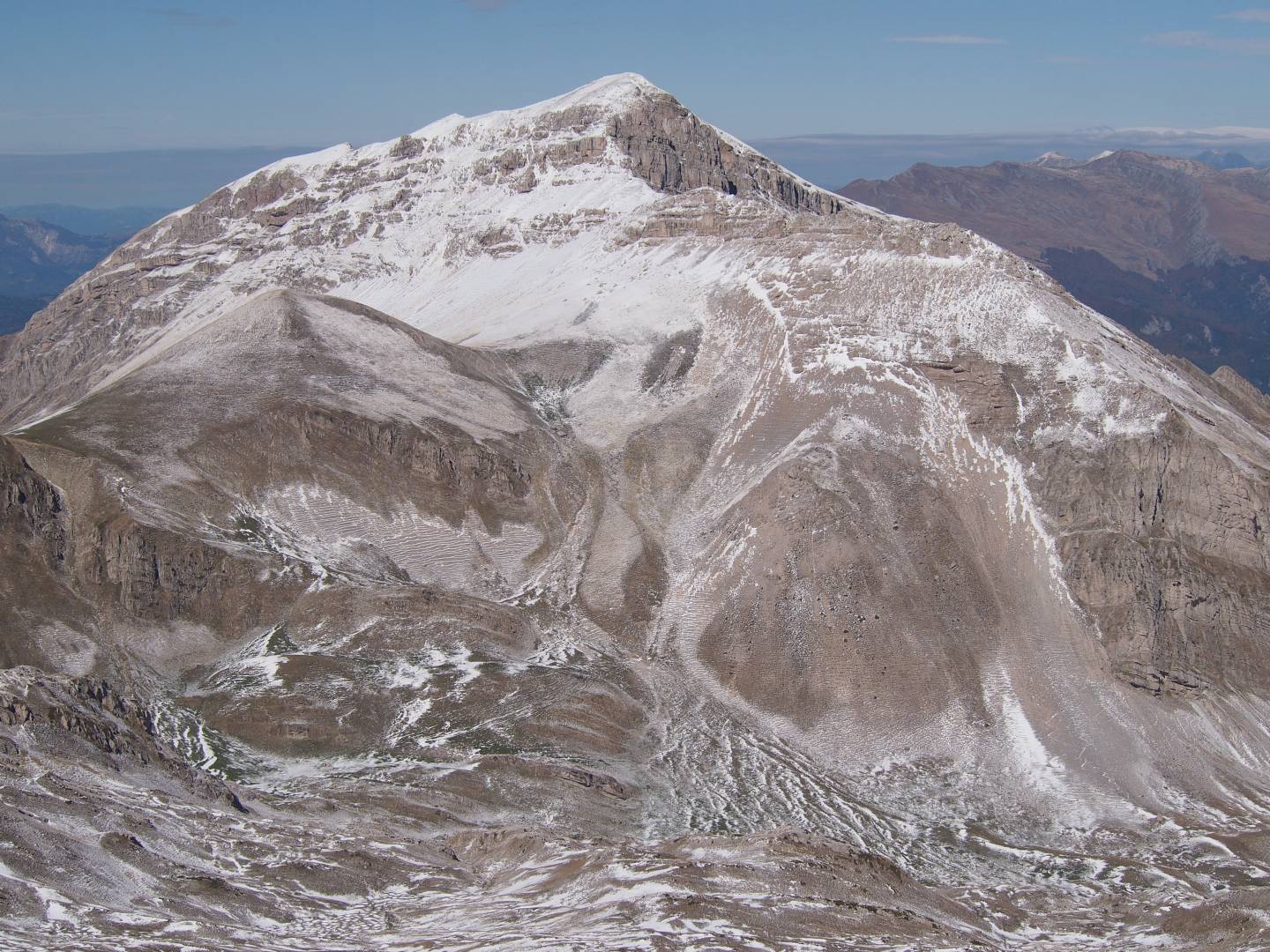
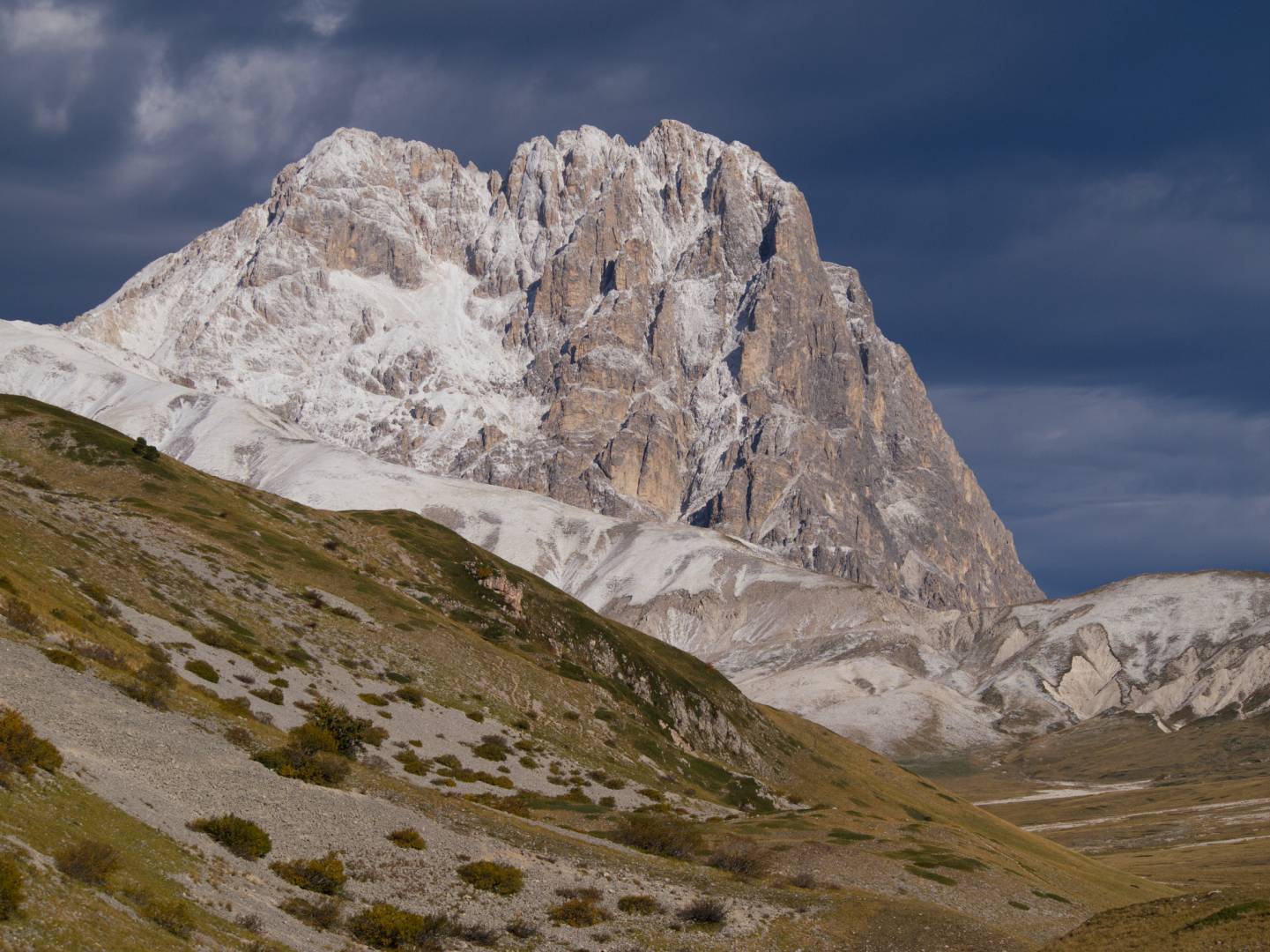
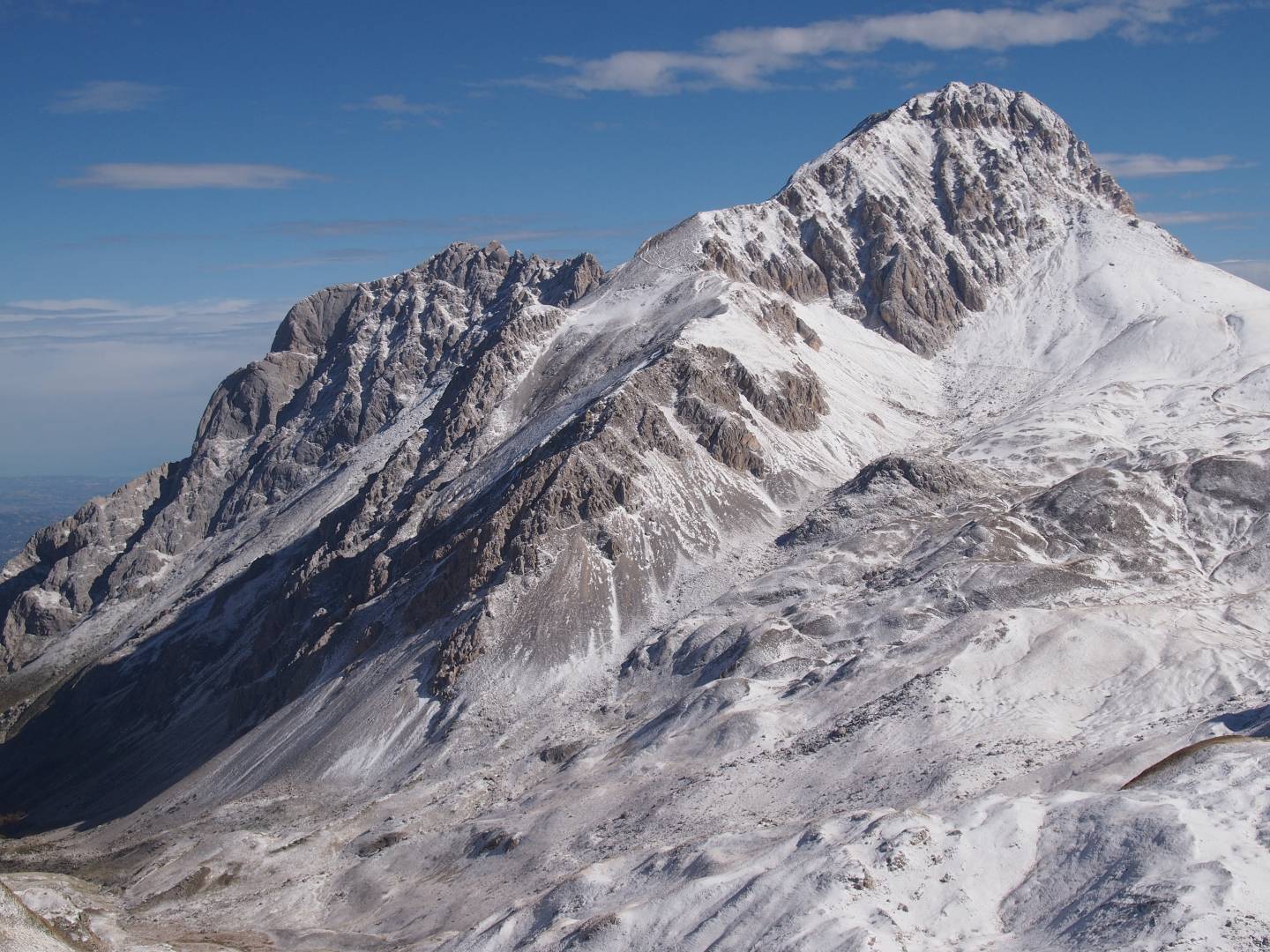
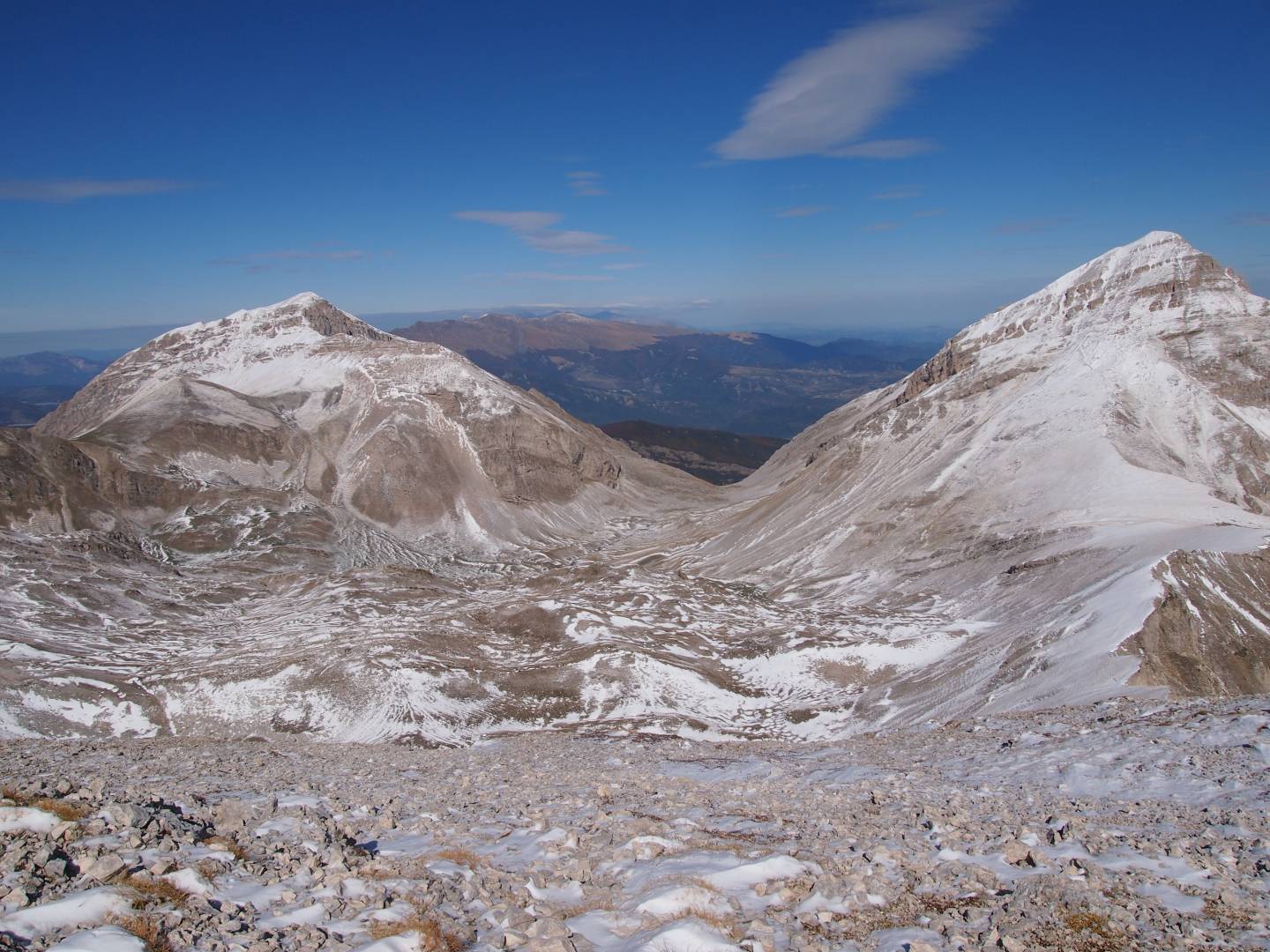
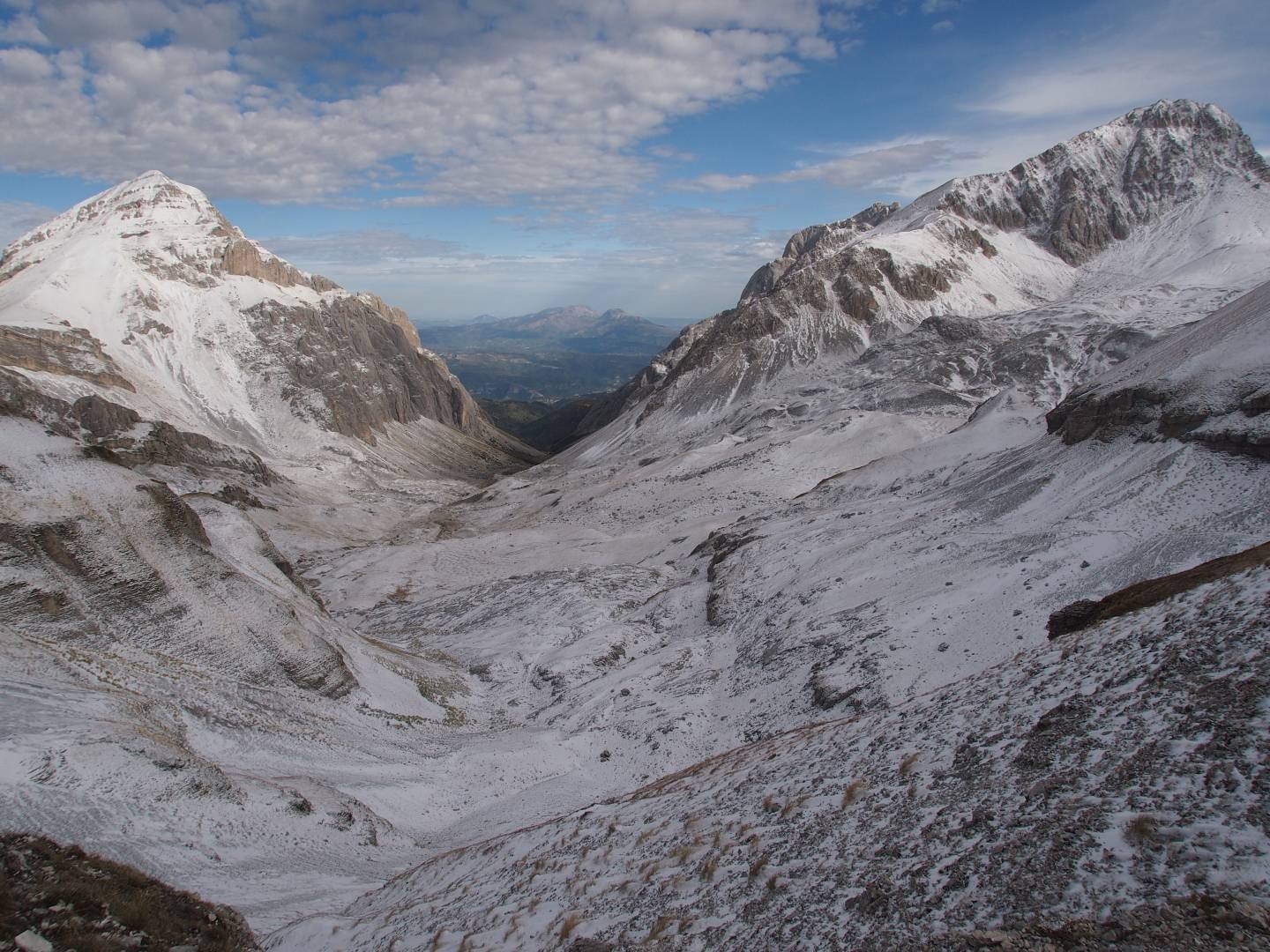
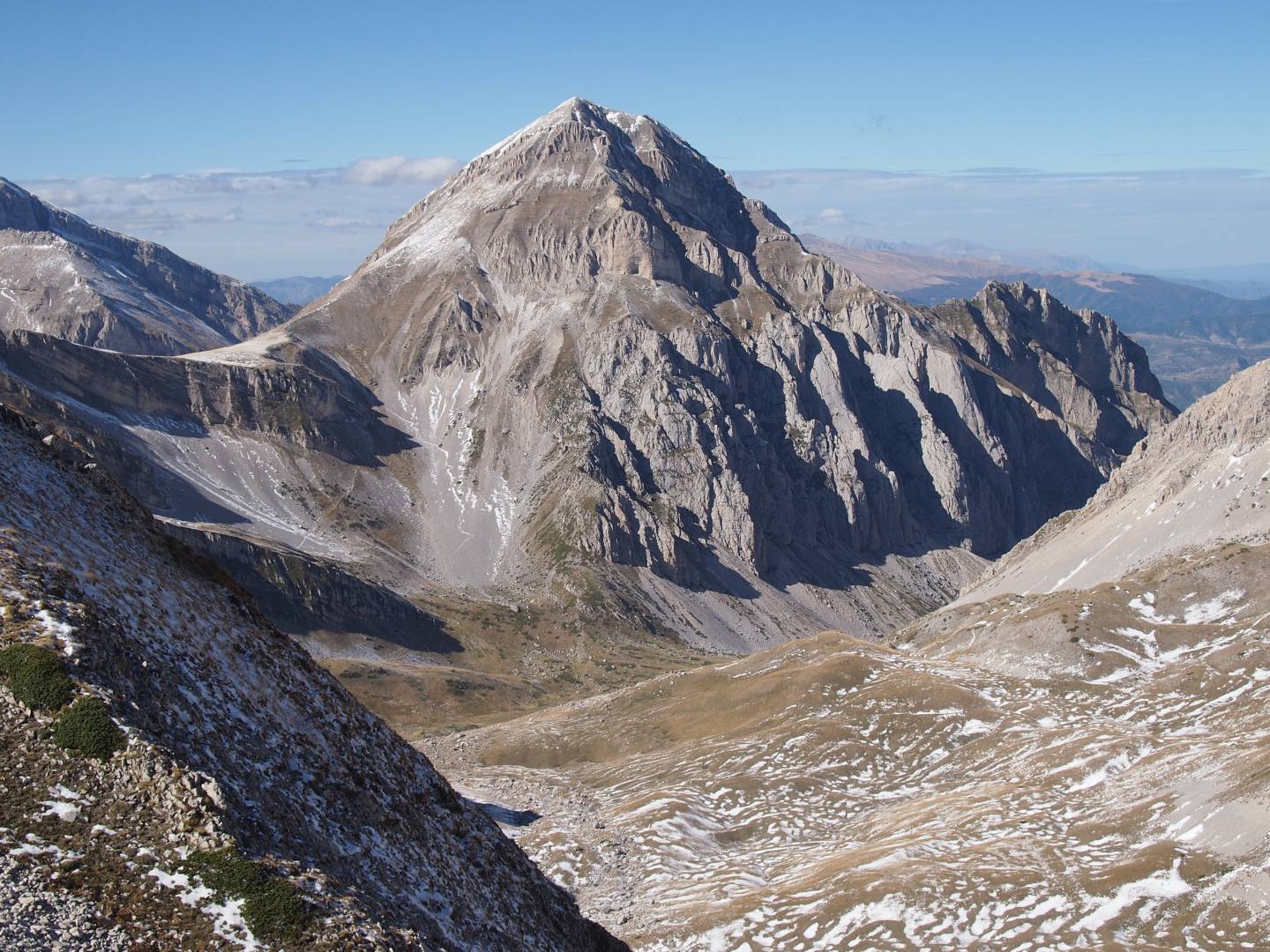
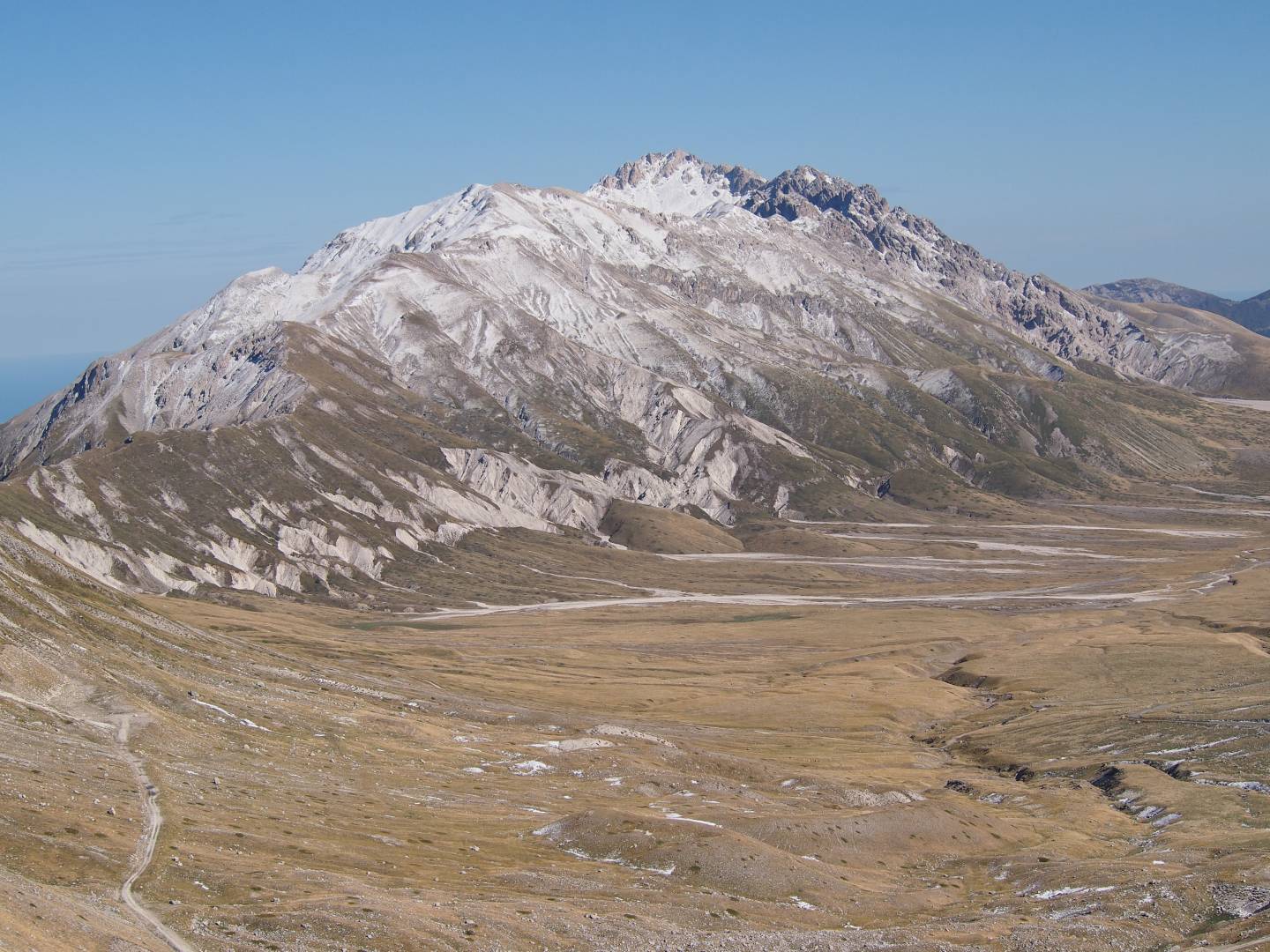
Thank you Richard! I shall not comment on your kind appreciation of Italy: Italians are usually too biased in favor of their land. But if you have the opportunity of coming, the Gran Sasso is surely worth a visit: it attracted many among the strongest climbers from the Alps and some of its vertical slopes are linked to the names of such climbers as Giusto Gervasutti or Hans Schmidt and Hans Riebeling, to name just a few.
Thank you Andrea for this description and the photos of the wide open spaces and blue skies of Gran Sasso. These are particularly welcome when we in London are largely confined indoors on short dark days. For me it brings back memories of a summer’s drive from Rome, taking in a stop over at Tivoli and ending up near the foot of the Monti Sibilini not far from Macerata. At the risk of sounding like a puff for the Italian Tourist Board, there is so much more to see in Italy than just the big city tourist honey spots!
Thank you for the article, this looked like a very enjoyable place to walk – and looks like you picked a really decent day for it.
Thank you David! The real magic was the first snow of the season. If you go later in winter it is mostly white and lacks the much of the contrast between rock and snow.
A great record of a great walk, climb and scramble? with superb pictures. Thanks for sharing this and I’m now a little wiser.
Thank you Dennis. I have been there several times, but on that day the light and snow were perfect; I have plentiful of bad photos of the same place under a boring light.
Great article, thank you. One of my ww2 uncles buddy, would talk about how beautiful the mountain sunlight was in Italy! He flew one of those little recon planes, I now see what he meant. I think what a blast it would be if all Mac peeps that bring us such wonderful photos and articles, could get together and make a book of photos, I know I would buy. Maybe use as fundraiser.
Thanks John. I remember several years ago I was coming back to Rome from Israel and the plane passed near the Gran Sasso shortly after sunrise. Magnificent view, but unfortunately I had not a camera ready for a picture.
Great photos, Andrea. Like Kevin I was unaware of such high mountains so close to Rome. I have driven from Florence to Rome, but Gran Sasso is much further to the East and so cannot be seen on that journey. Well done too with the climbing. I now only go up comparatively low mountains here in Ireland and I still have to steady myself before I take a photo. The highest I have ever stood on land has been in Italy, on top of Mt Etna in Sicily. Last year my wife and I went to the top of Vesuvius, having been driven most of the way up. It still knocked the stuffing out of us. Getting great photos in mountains requires a lot more than just being a great photographer and you have shown that you have what it takes.
William
Thank you, William! And actually both the Vesuvius and the Etna are great walks and allow great photos, even though they lack the verticality of the Gran Sasso.
This was a revelation to me as I had no idea these mountains existed so close to Rome; my ignorance. Thank you for bringing it to us and for the lovely photos – you certainly had a beautiful day.
Thank you, Kevin, and yes Italy has quite a lot of mountains, almost everywhere. The Corno Grande of the Gran Sasso is the tallest summit outside the Alps (but with the exception of Sicily’s Etna which is over 3,300 m above sea level).
Andrea, sorry I didn’t warn you that your article was scheduled to publish today. I’ve rather had my eye off the ball in the past ten days because of William’s Swiss Roll story, but I’m now finding some time to deal with other blog issues. Mike
Dear Mike, no problem at all, and thank you for your help, I greatly appreciate your job!
A great article and images Andrea. I guess you must have climbed on a relatively warm day as the snow on your images melted as the hours. Starting early in the morning gave you beautiful lights and constrasts which disappeared as the day wore on.
Thank you, Jean. Indeed you guessed right, the morning was quite cold but by midday it was warm enough for the snow to begin melting, especially on south sides. A few days later it snowed again but alas, we were not there to take pictures.
Apologies to readers. The site was down for about three hours this afternoon, possibly because of the amount of traffic. All is now up and running but it appears that several comments entered after 9.30 am this morning (9/12/20) have gone missing. If you have commented, would it be possible to do so again? Many thanks and apologies for the upset. Mike